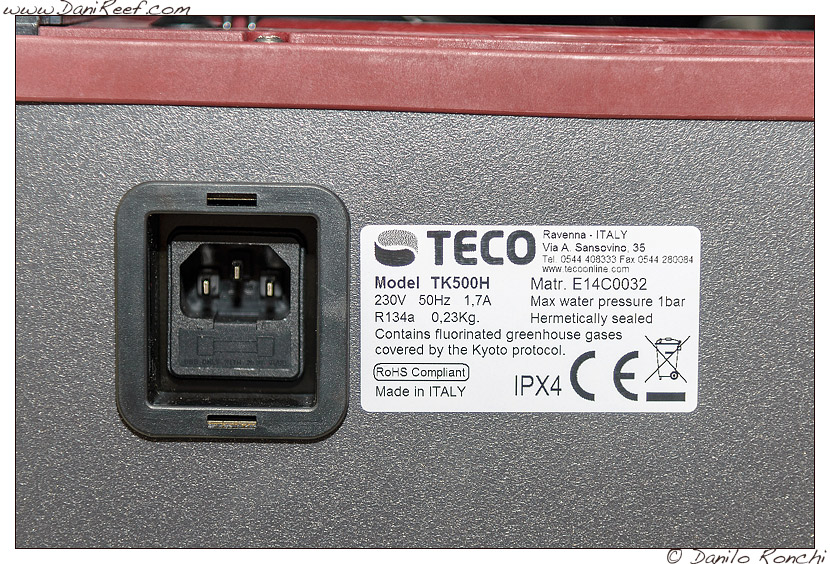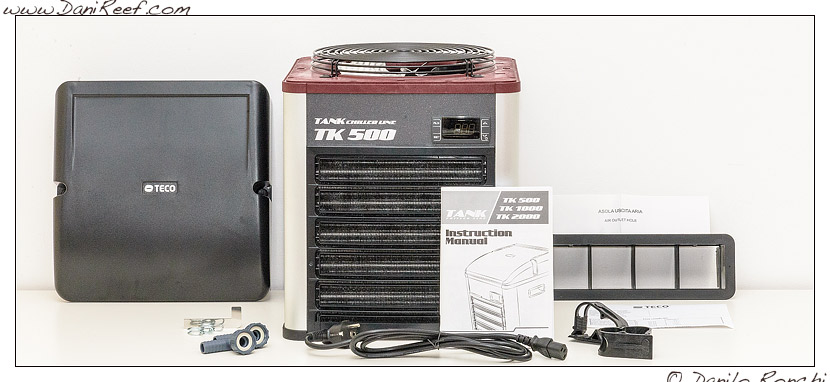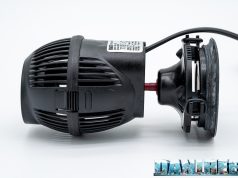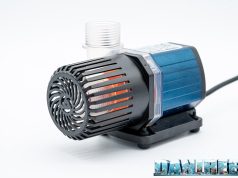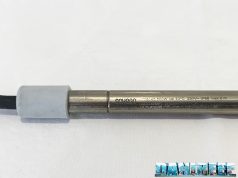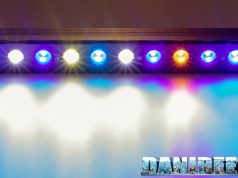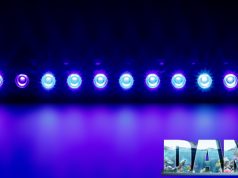The operating logic
The temperature controller has an internal cycle of intervention (hysteresis) of 1 ° C, as I have already had occasion to write, so if you enter 27 ° C, the chiller will be off until reaching the desired temperature plus the hysteresis, here 28 °, and then it would turn off the chiller at 27 ° C. Sensitivity for reading is the tenth of a degree, enabling you to read and follow the decrease in temperature in the aquarium.
The cycle of 1 ° C may seem a bit ‘too wide, but only if the chiller would be much too big for the tank, because in this case could have significant fluctuations in a short period of time because of major cooling power. In this case the tank could be maintained under control with no problem, in any case, is always possible to set the control in steps of half a degree.
In our test system the chiller has kept fresh the aquarium and normally remained on throughout the day following the time of HQI, then it can be said that it was perfectly calibrated for our system, or for using coupled with a fan.
In the absence of the fan you should be provided to purchase the more powerful chiller, TK 1000.
The Noise
One problem that plagues us most aquarists is certainly noise, and the chiller is certainly an accessory little silent by definition. Apart from those who can afford to install the chiller outside his home, or who may have the technical part of the aquarium in a dedicated room, here the noise becomes an important feature to consider.
In the aquarium of Jonathan the chiller has been installed inside the cabinet, with side-mounted conveyor.
To measure the noise I used a VOLTCRAFT 320, digital sound level meter IEC 651 Type II that for the effect of the measure is sufficiently reliable, the following values. Given the nature of the noise to be measured, all measurements were performed with the dBA attenuation curve. The measurements was conducted with closed windows, the sound level meter on the stand at 1 meter distance, with a minimum measurement of 120 seconds, gave the following results:
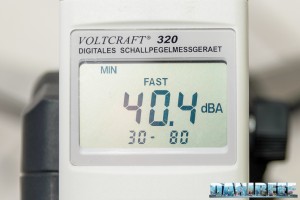 Environmental noise with all the Aquarium off except the calcium reactor
Environmental noise with all the Aquarium off except the calcium reactor
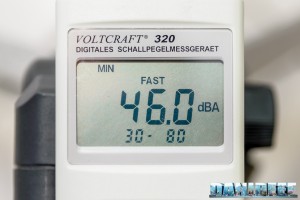 Aquarium on, chiller off, closed doors
Aquarium on, chiller off, closed doors
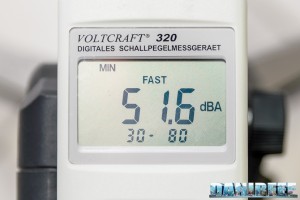 Aquarium on, chiller on, closed doors
Aquarium on, chiller on, closed doors
 Aquarium off, chiller on, closed doors
Aquarium off, chiller on, closed doors
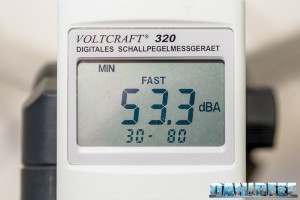 Aquarium off, chiller off, doors open
Aquarium off, chiller off, doors open
We see the comparison with the other chillers we tested in the past:
| Measuring conditions | Teco TK 500 | Teco TR15 | Aquamedic Titan 250 |
| Aquarium on chiller off | 46 dB | 41.5 dB | 48.7 dB |
| Aquarium and chiller on | 51.6 dB | 53.8 dB | 52.1 dB |
| Environmental noise | 40.4 dB | 35.0 dB | 35.8 dB |
Aquariums where we made the measurements are different, but what I notice is that with just an aquarium noisier, 46 dB versus 41.5 dB, when we turn on the chiller the value is lower 51.6 dB versus 53.8 dB.
The measured values are related with environment in which we performed the tests, and then in other situations the measured noise could be very different, due to major or minor reinforcements at various frequencies.
Electricity consumption
The choice of a chiller is important also for the evaluation of its power consumption. Aquarists know how the electricity consumption of aquarium could impact on the electric bill, so when they are going to insert any object in the layout, they take in account this important feature.
Teco TK 500 provides for its cooling power consumption 240 watts, very few in absolute value, and therefore also the relative consumption will not be particularly high. Obviously the use as a heating station would have a consumption of 400 watts, as the heater installed.
Normally we can also say that energy consumption by the chiller is typically much less than what we might expect. Although 240 watts to amortize are still a lot, if we consider the periods of intense heat, the chiller could stay on for 8 hours a day (about 52 cents a day in these conditions in Italy).
Important: the speed of the water in the chiller and the choice of the feed pump
The speed of the water inside the chiller is extremely important. Normally you would think that the speed of the water is not “very” important, because you think that if the water could pass quickly it would be cooled slightly but in a high amount, which is expected to be fully equivalent to pass less water, in this way it would pass a lower volume but more cold.
This reasoning, however, when it comes to chillers, whatever brand they are, is just plain wrong.
This reasoning does not take into account the efficiency of the chiller that is much more efficient when the temperature rises. When water enters the unit this is cooled, but if it passed very slowly the chiller would cool water very much, but then it would be in trouble to try to cool it further, while a fast pass would allow water to remain warmer, and then of maximize the intervention of the chiller itself.
So, faster is the transit of water, or more powerful is the pump, the higher the yield and therefore the chiller will cool faster, and the difference, believe me, is not small, but the overall efficiency also could be double.
Teco recommends to use a pump that guarantees an effective output of at least 400 liters per hour, but given the considerations just made, we could also double the flow to obtain only benefits.
I recommend to all who have the luck to install the chiller outside, to measure the actual flow rate, because the distance and curves needed to connect aquarium and chiller lower considerably the flow, especially in the presence of corrugated pipes. I recommend also to protect the unit from weather and direct sunlight that would inevitably lead to degradation in performance and also in some cases to destroy the unit, as Teco itself identifies this chiller as indoor chiller.
The heater
The Teco TK 500, as we have said, is equipped with a 400 watts heater, which is used with the same logic of the cooling. The heater works perfectly.
The only shortcoming of this chiller is that by setting the hysteresis loop to one degree could bring the system to heat the aquarium in the morning, and to cool it in the afternoon.
Although this approach is in favor of ease of use.
It would be useful to separately set the thermostat for cooling and heating.




